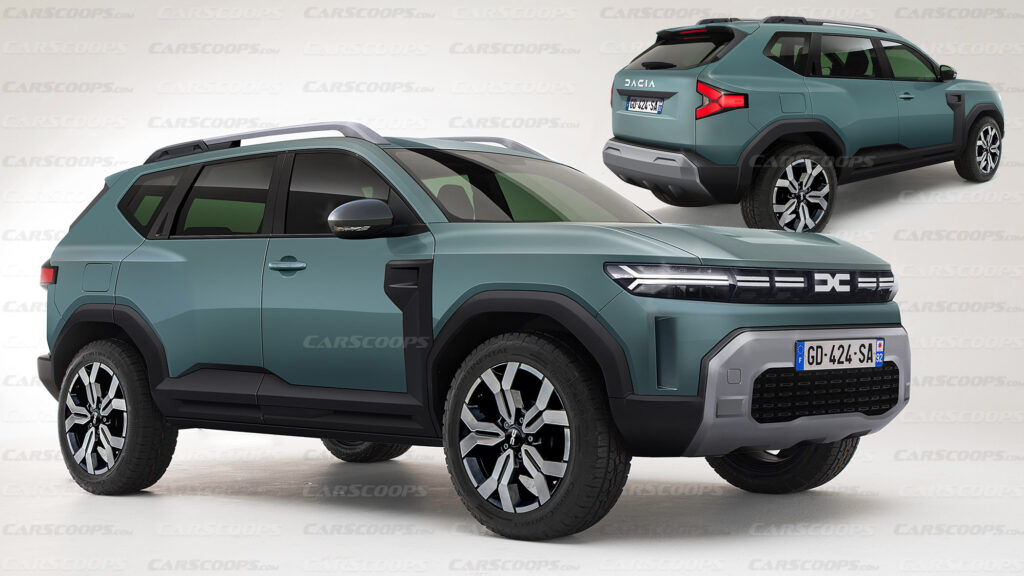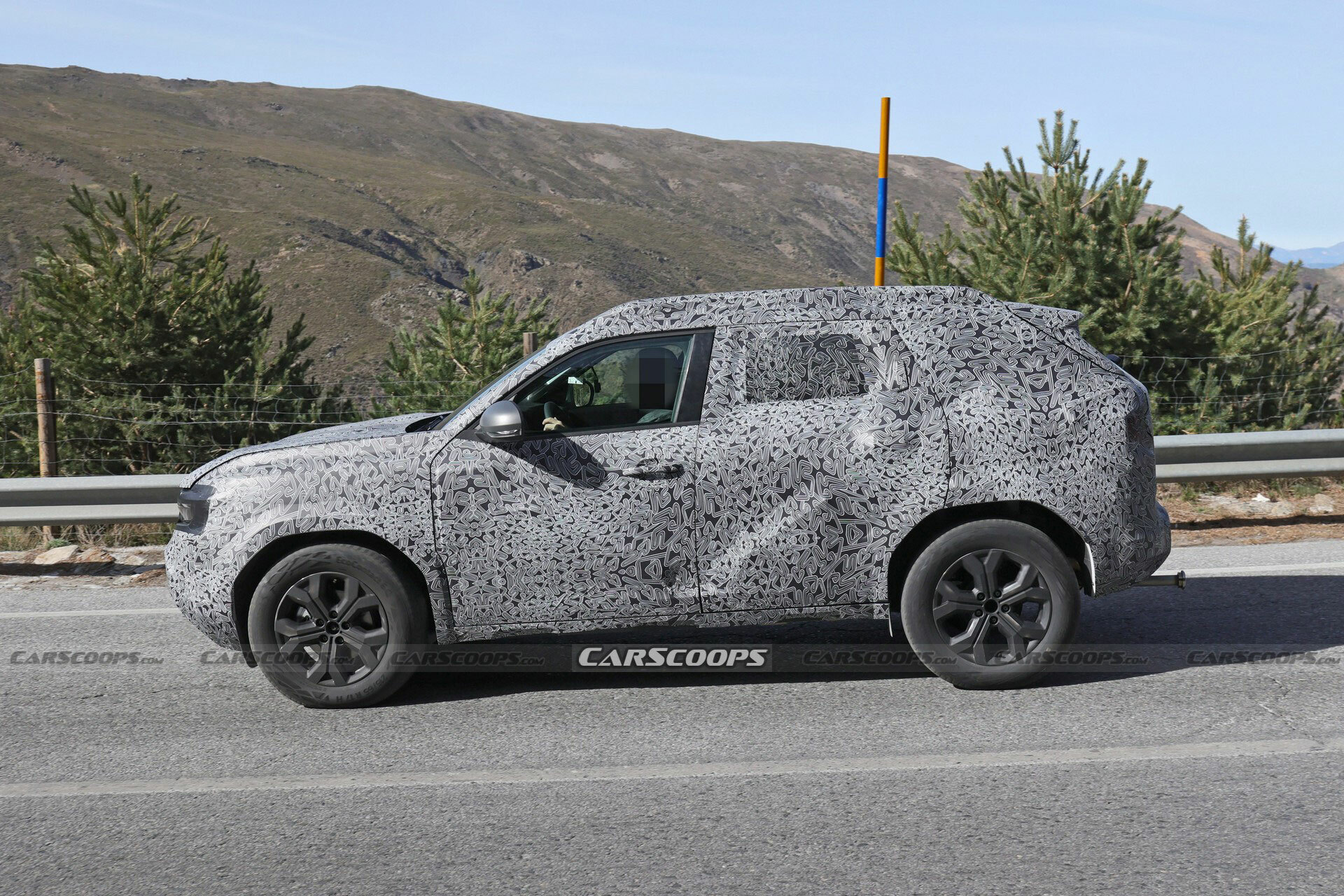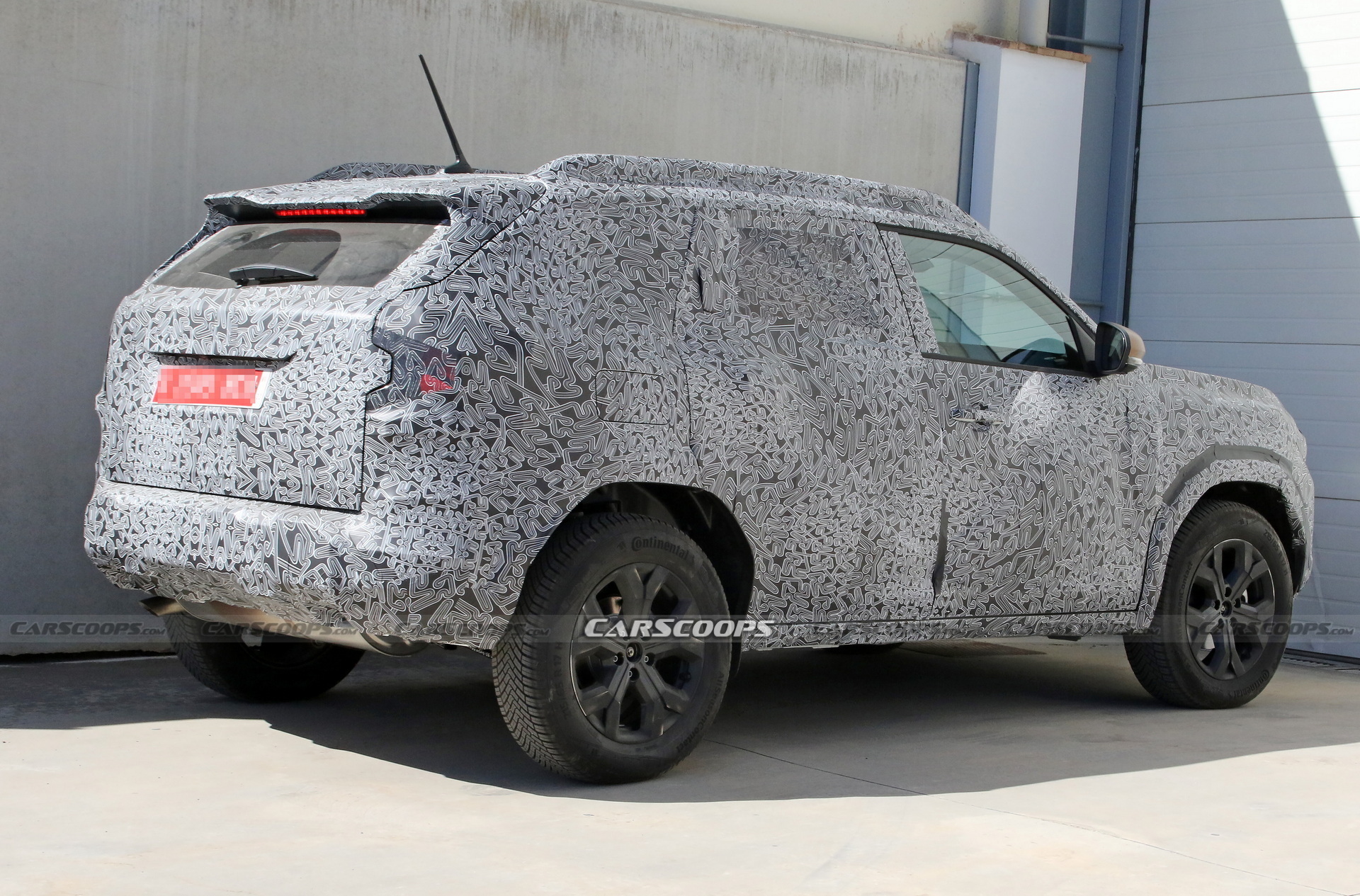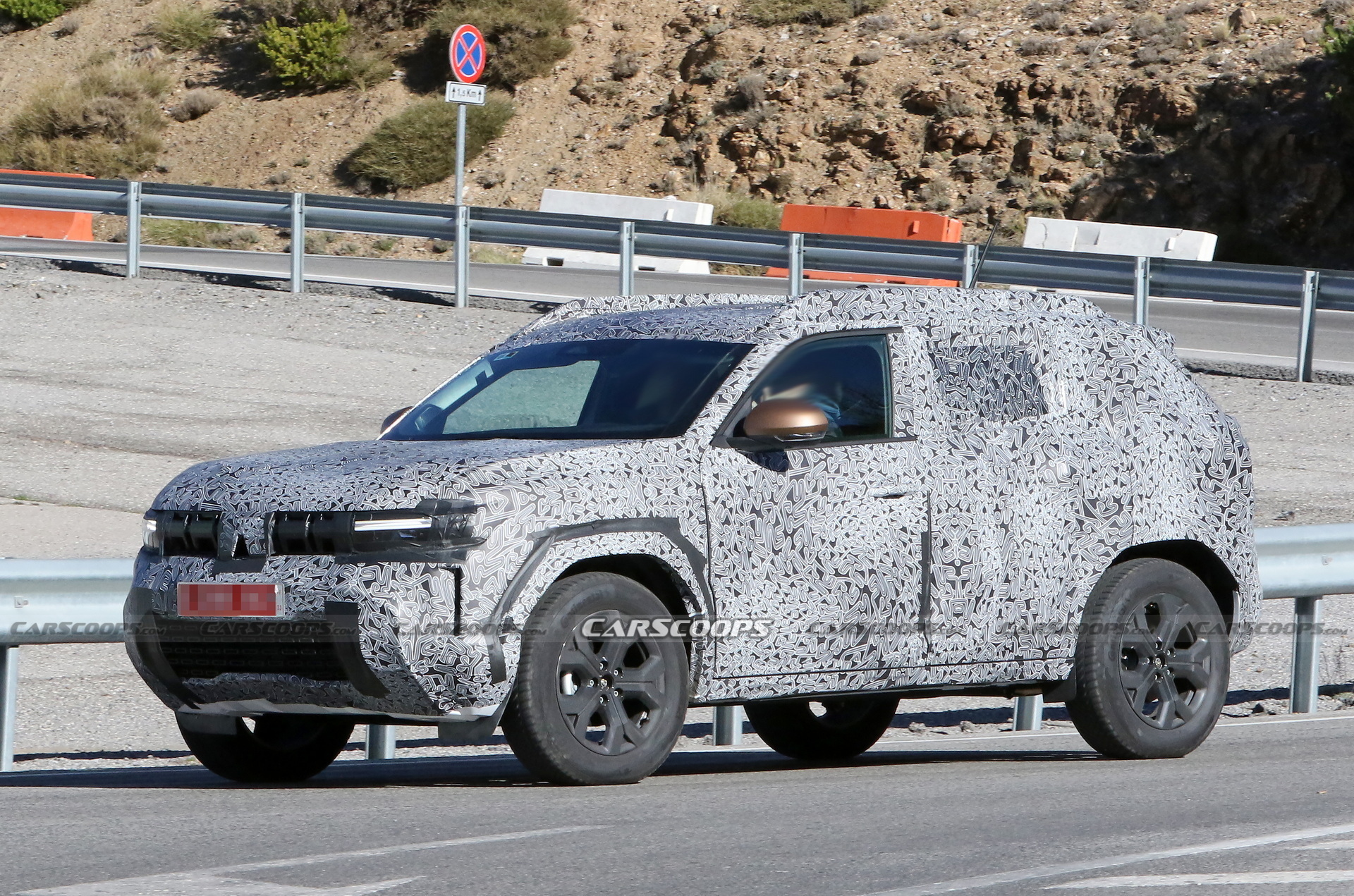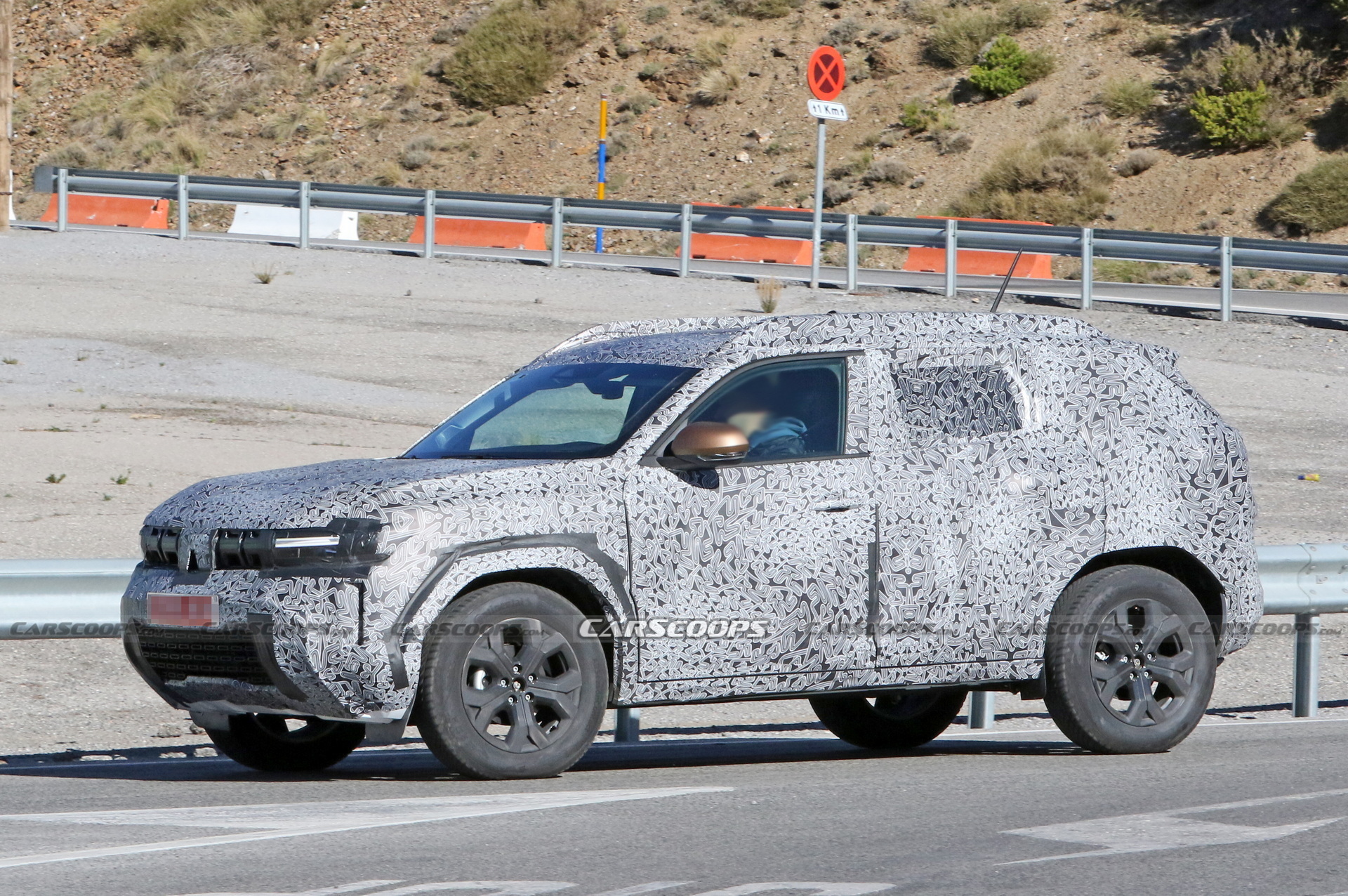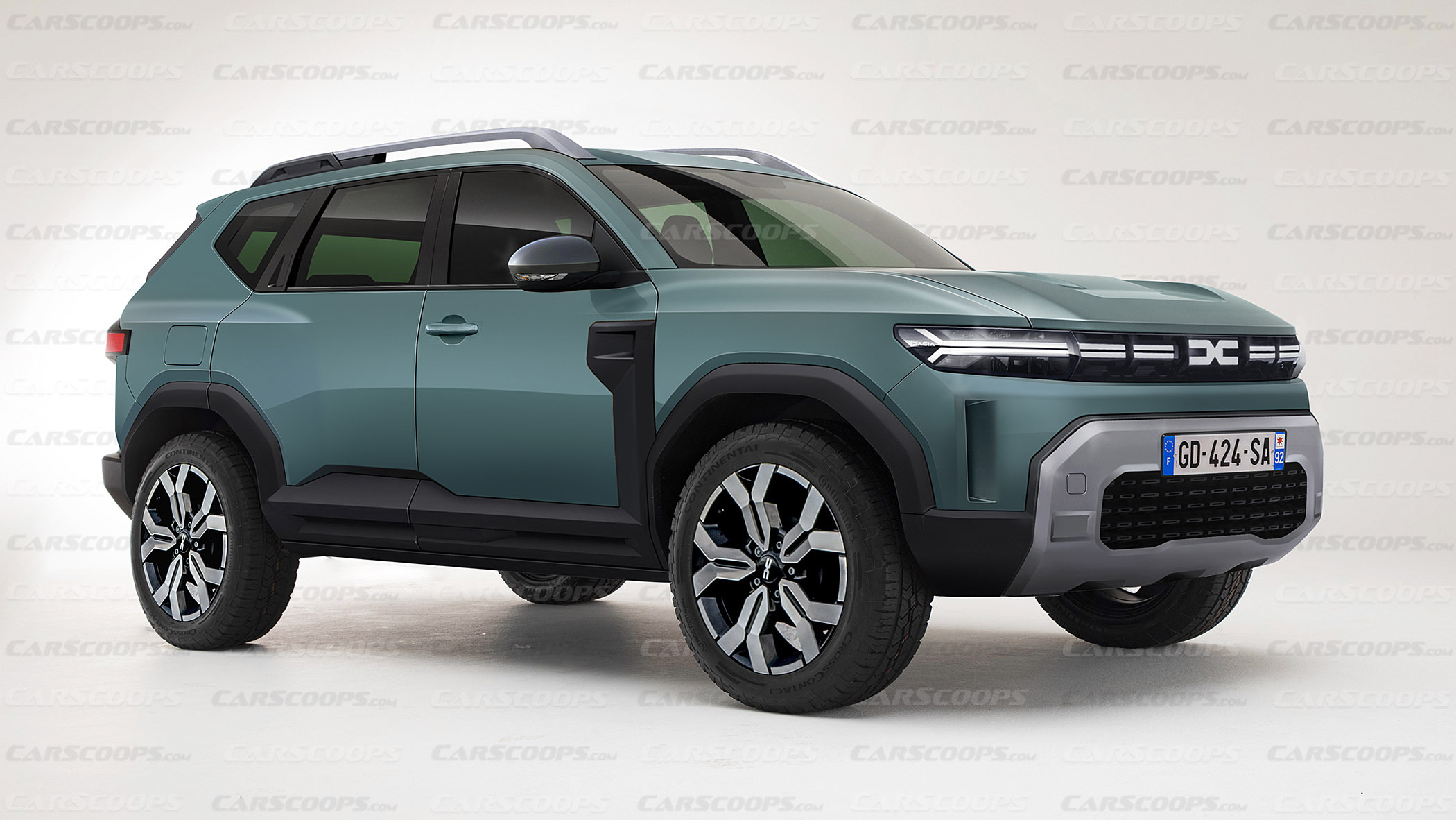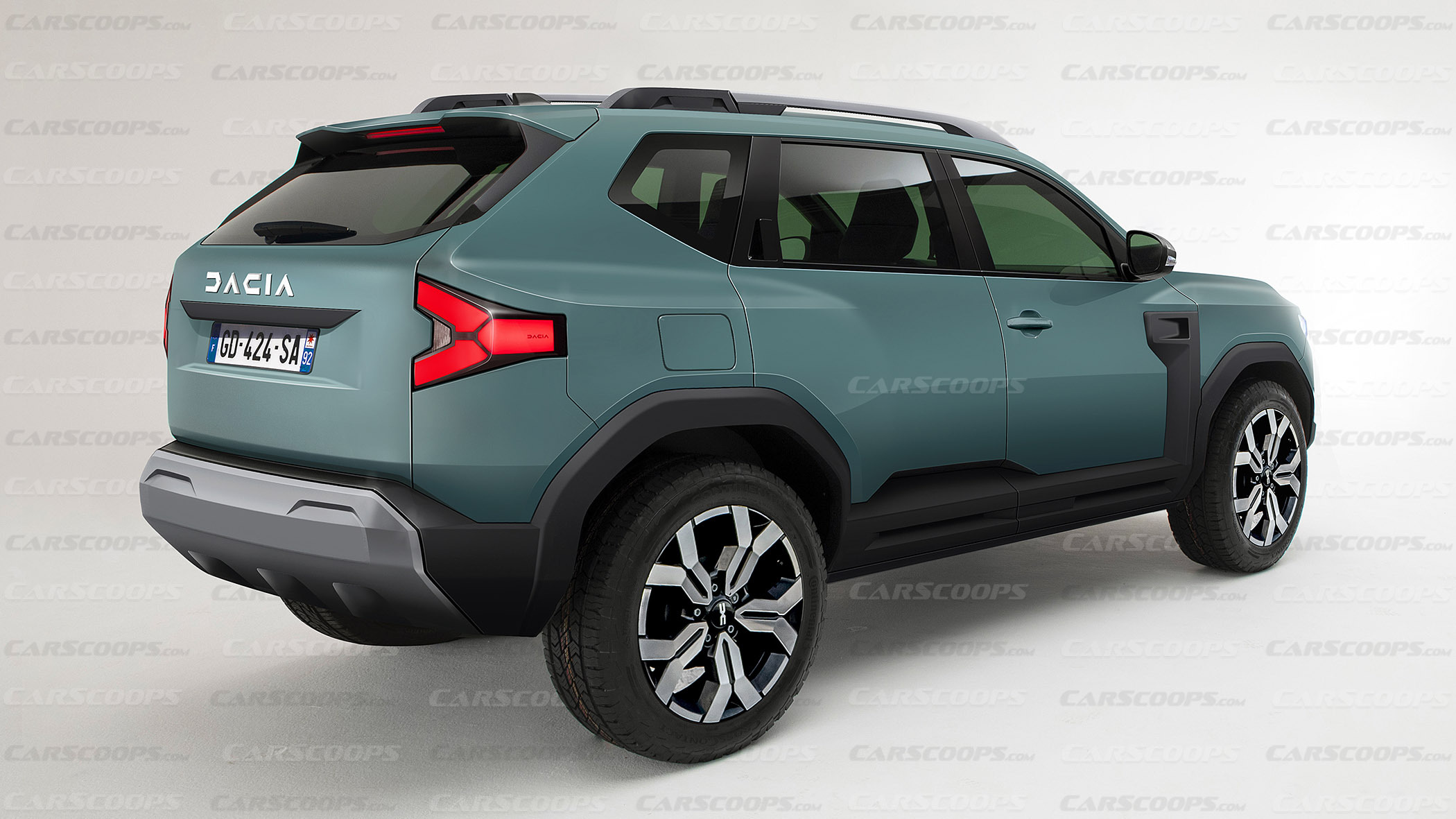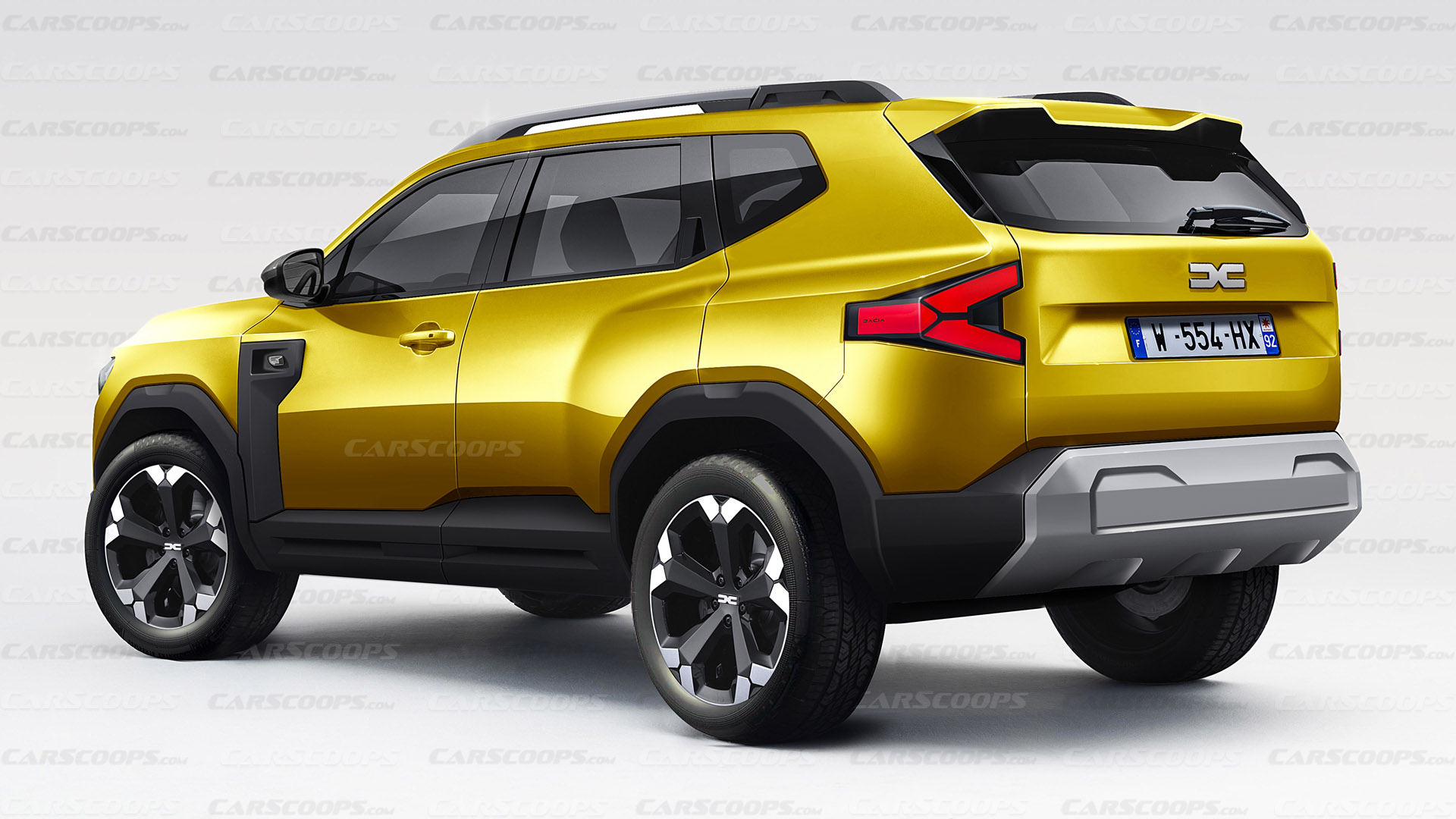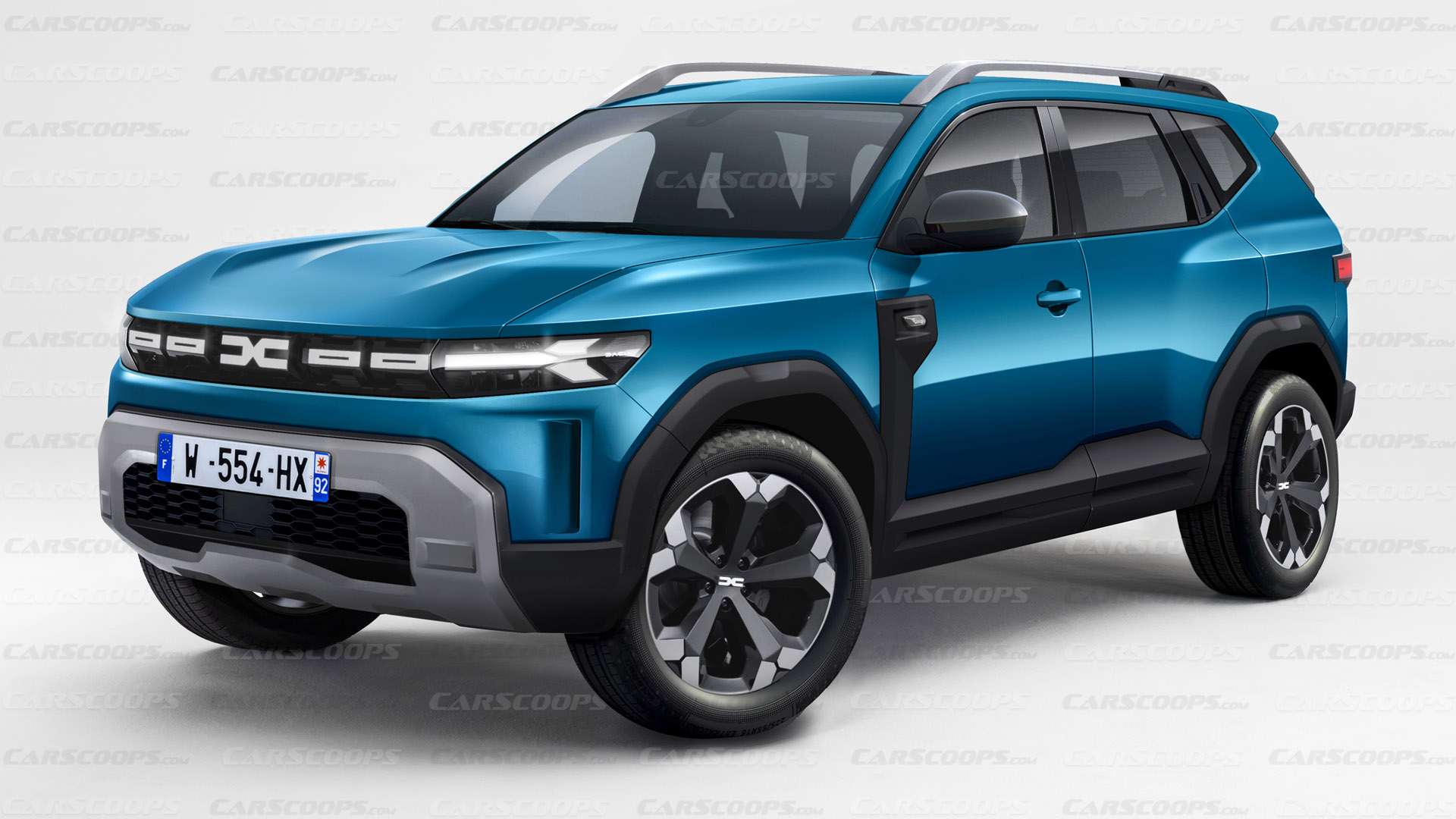This story includes speculative illustrations of the new Duster that are not affiliated with or endorsed by Dacia. We have refreshed the article with all-new renders and the most up-to-date information concerning the small crossover. (Updated 5/27)
The Dacia Duster is one of the Romanian automaker’s greatest hits with more than 2 million sales since its debut in 2010. An all-new third-generation model is anticipated to launch in 2024, maintaining an important role in the Renault Group brand’s lineup. The new sub-compact Duster will stay true to the spirit of its predecessors as an affordable, off-road-ready, and practical B-segment SUV with adventurous styling, while bringing new technology and improved refinement.
The current, second generation of the Dacia Duster was originally introduced in 2017 and received a mid-cycle facelift in 2021. Despite its continued popularity among European buyers, the SUV is in dire need of an update due to its reliance on the aging B0+ platform. The new generation will finally make the move to the much newer CMF-B architecture, which is also used in the Renault Clio / Captur, the Nissan Micra / Juke, the Mitsubishi ASX / Colt, as well as the Dacia Sandero / Logan / Jogger and the upcoming Bigster.
Bigster-Inspired Styling
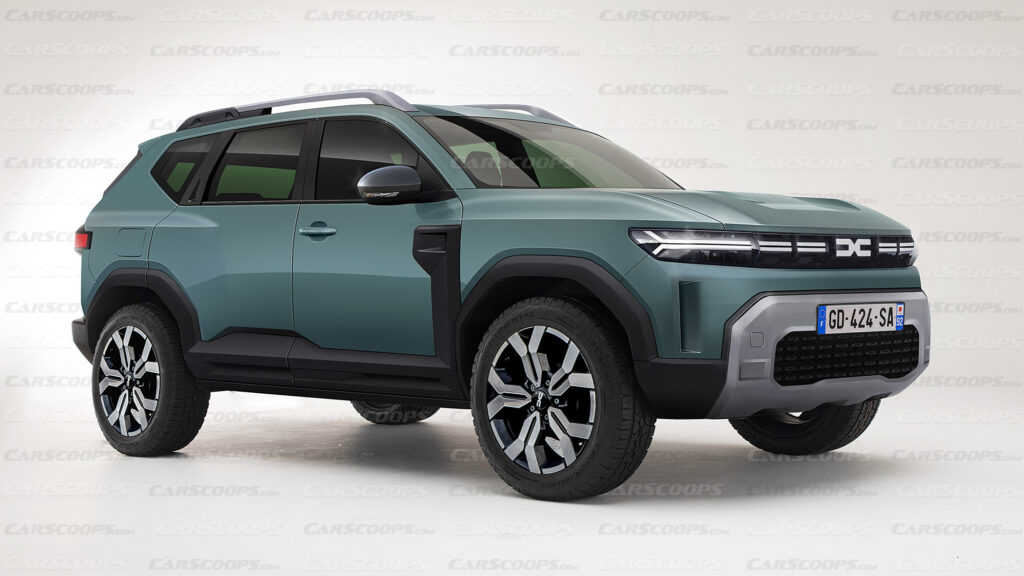
Based on the fresh spy shots of camouflaged Duster prototypes, our associates created exclusive renderings, giving us an early look at the Romanian SUV. Dacia is a master in cost-cutting strategies, something that will be applied in its SUV family. In that context, the Duster could share some of its exterior and interior components with the larger Bigster, despite the difference in size.
The mechanically related SUVs within the Dacia lineup could feature similar design elements such as thin LED headlights, triangular taillights, bumpers with integrated aluminum-style skid plates, boxy wheel arches, and pronounced fenders. Additionally, they could incorporate the snorkel-inspired feature on the profile, which was introduced by the second-generation Duster as a clever, stylish, and cost-efficient method of connecting the offset fenders with the doors. This distinctive design element has become a signature characteristic of the Duster SUV.
The Duster will feature regular door handles at the front and hidden at the back, while losing some high-tech features of the fancier concept, all in favor of reducing costs. It will also feature the new grille and Dacia Link emblem which has already been adopted by the entire range of the Romanian automaker.
Read Also: 2024 Dacia Duster Shows Off Slim LEDs And Boxy Shape In Its Spy Debut
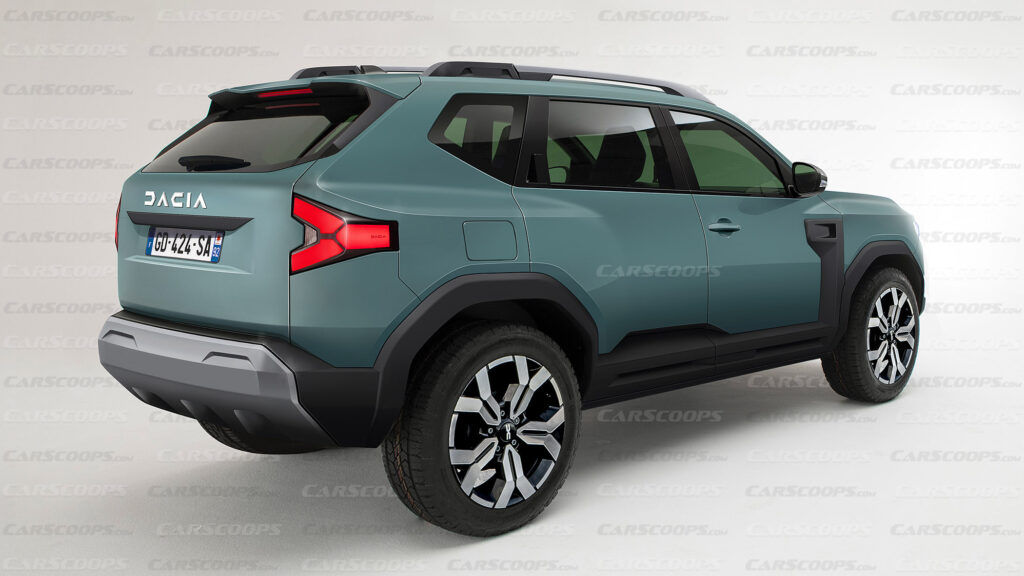
The dashboard – partly revealed by earlier spy shots – will feature a larger and higher-mounted touchscreen for the infotainment system, at least in the high-end trims as the cheaper ones will have to settle with a smartphone integration solution. The introduction of a digital instrument cluster will be a first for Dacia, possibly joined by Renault-derived switchgear.
The value-for-money character of the Duster makes us believe that the Romanian automaker will retain a fair amount of hard scratchy plastics on the dashboard, door cards, and center console. However, Dacia designers could find clever ways of enhancing the perceived quality with modern textures and durable upholstery for the seats – especially in the flagship Extreme trim which has proven to be quite popular.
The new Duster is expected to grow in length compared to the current model, which measures 4,341 mm (170.9 inches) long, approaching the Jogger’s 4,547 mm (179 inches). This will result in even more space for the passengers and their luggage. After all, the Duster has always been one of the roomiest models in the B-SUV segment, and Dacia wants to keep it that way. Additionally, the Duster will benefit from Dacia’s new accessory line, potentially including roof-mounted tents and other camping solutions, further enhancing its versatility for outdoor enthusiasts.
Electrification Is Knocking Duster’s Door
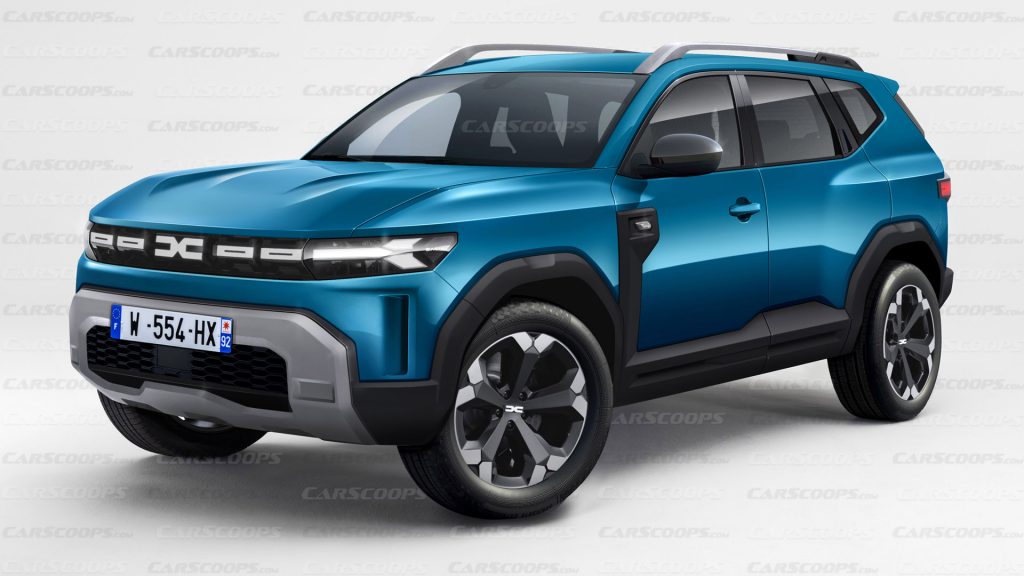
The Duster is the only remaining model in the Dacia range that is not yet based on the Renault Group’s new CMF-B architecture, already found in the Sandero, Sandero Stepway, Logan, and Jogger. This will change with the third-generation model, bringing improvements in ride quality and refinement, without losing the rugged character that is advertised as an important selling point.
In terms of powertrains, it is likely that the turbocharged 1.0-liter three-cylinder engine will continue to serve as the entry-level option in the Duster lineup, offered in both petrol and bi-fuel (LPG) versions. However, due to the more stringent Euro 7 emission regulations, the diesel option is anticipated to be removed from the range. In its place, efficient mild-hybrid petrol powertrains could be introduced as an alternative, ensuring compliance with the stricter emission standards while providing improved fuel efficiency and reduced environmental impact.
More importantly, Renault’s self-charging hybrid that was recently introduced in the Jogger will most likely find its way into the first Duster Hybrid. This setup combines a naturally-aspirated 1.6-liter engine with two electric motors, a 1.2 kWh battery pack, and a multi-mode gearbox. It produces a combined 138 hp (103 kW / 140 PS) and offers a driving range of 900 km (559 miles) with a full tank of gas, although it only comes in FWD guise.
Finally, there have been rumors and speculation about a fully electric version of the Duster based on the CMF-BEV architecture. However, Dacia has emphasized its commitment to the internal combustion engine (ICE) game until the very end. The brand’s focus is on providing the most affordable solutions for its customers, so while an electric Duster may be a possibility in the future, Dacia’s current priority remains on offering cost-effective ICE options to meet the needs of its customer base.
Off-Road Looks Require A 4WD Option
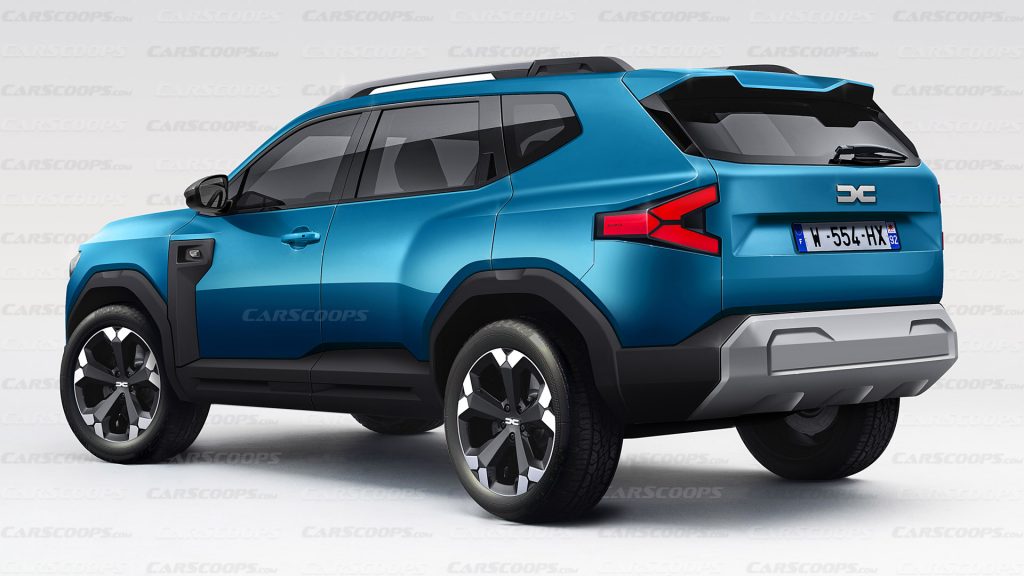
The new Dacia Duster is expected to carry over the tradition of offering all-wheel-drive as an option, despite the fact that most variants will be front-wheel-drive. This means it will remain one of the few models in the B-SUV segment capable of more serious off-roading, thanks to the combination of four-wheel-drive, generous ground clearance, and respectable approach and departure angles in line with the no-frills looks. For reference, the current Duster boasts a 214-217 (8.4-8.5 inches) ground clearance, a 30° approach angle, and a 33-34° departure angle.
Just like its predecessors, the third generation of the Dacia Duster will be produced in Mioveni, Romania. The company has already started testing camouflaged prototypes so the debut is likely near. French media report that the reveal could come as early as autumn 2023, with an expected market launch in the spring or summer of 2024.




